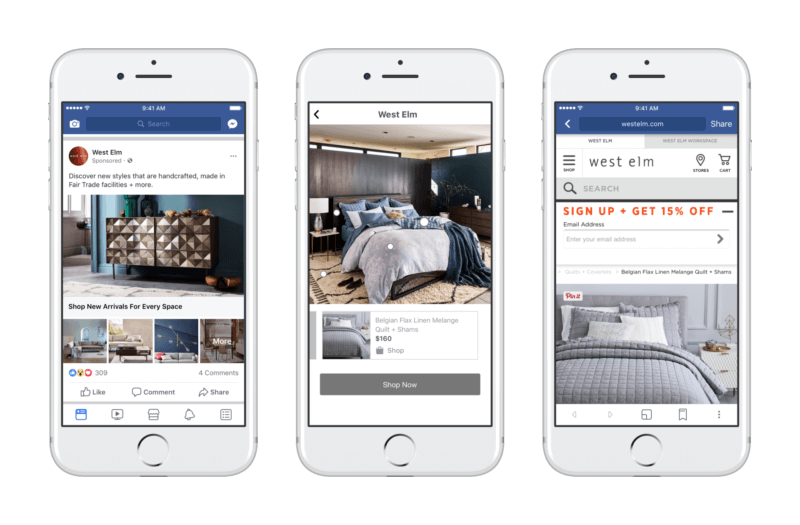Facebook is updating the shoppable Collection ad format introduced in March to combine the look of a print catalog with the interactivity of a digital ad.
On Monday, Facebook announced a new option for its full-screen, mobile-only Collection ads called “lifestyle templates.” Brands can use the updated format to refashion their ads from a typical product gallery into more of a showcase that can link to a brand’s e-commerce site and include a map of its nearby brick-and-mortar store.
While Facebook is only testing the new ad template with roughly a dozen brands such as J. Crew and West Elm, the company plans to make the ad format available globally in October; Collections remain limited to running on Facebook, not Instagram or Facebook’s Audience Network ad network, according to a company spokesperson. And it’s not the only move Facebook is making to earn a spot atop marketers’ lists heading into the holiday shopping season. Facebook has also been testing a way for brands to target ads to people who have visited their brick-and-mortar locations.
If the original Collection aesthetic mirrored the product listing grids on an e-commerce site, the new template adopts the magazine-like look of a print catalog and digitizes it. The ads can feature multiple full-width images supplemented with text and carousels calling individual items included in a photo. And those product listings can include a product’s name, price and call to tap on the entry to open the corresponding product page on the retailer’s site.
To make people more aware which products are available for purchase, Facebook will tag those items in an image with a white dot that people can tap to display the corresponding entry in the clickable carousel below the photo. That may sound very similar to Pinterest’s “Shop the Look” feature. It is. It’s also similar to Instagram’s Shopping feature that was introduced last year and became more widely available this year.

Facebook’s catalog-esque lifestyle template can include photos with products tagged for people to tap.
Advertisers are currently responsible for tagging the products in their photos, according to a Facebook spokesperson. It will be interesting to see whether Facebook eventually automates the process using its computer vision technology, as Pinterest has done.
Popular Stories
Facebook tests a new ad format that puts it further ahead of its competitors 12-part recipe for product descriptions that sell The holy grail of engagement starts with your employees How to market your brand using interactive native content, Part 6
Read the original article here


